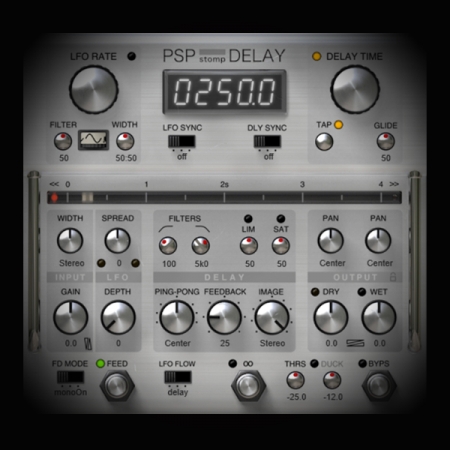Using a Flanger to create Stereo Effects
Advanced techniques for creating very cool stereo effects using the flanger effect and in this instance it is vocals that get the flanger treatment!
Effects
Purchase to view this tutorial
By purchasing this tutorial, you'll get immediate access - your purchase helps create new and exciting content and this site survive!
£2.00Add to basket
Using a Flanger to create Stereo Effects video tutorial explains how to use a flanger effect to create stereo effects most notably stereo width.
I find it quite disheartening that modern-day producers don’t use the myriad of processing tools created be engineers to help us in our mixing and mastering chores. In terms of studio effects reverb, delay and chorus seem to reign supreme in the producers’ arsenal of effects processors. Wonderful effects like flangers tend to get ignored as producers either don’t know what they are capable of producing or feel that the learning curve is too steep to conquer such a distinct effect. Either way, today’s producers are missing out on a really potent studio tool.
Flanger effect
A flanger is another modulation effect whereby the delayed signal, which is added back to an equal amount of the dry signal, is modulated by using an LFO. If you add the output back into the input (feedback) you get resonance with the comb-filter effect.
Comb-filtering occurs when the delayed signal is combined with the dry direct signal. The comb filter creates peaks and troughs in the frequency response. If the polarity of the dry signal is the same as the delayed signal we call this positive flanging and if the polarity of the delayed signal is opposite to the polarity of the dry signal we call this negative flanging.
If the feedback is greater then you get what we call resonant flanging. The more feedback applied the more resonant the effect. This is a bit like increasing the resonance on a normal filter.
Feedback also has phase. If the feedback is in phase then it is called positive phase. If the feedback is out of phase it is called negative feedback. Negative feedback has odd harmonics whereas positive feedback has even harmonics. Some flangers will have a phase parameter to control the negative and positive phase and this has quite a dramatic effect on the overall effect. Additionally, the phase controls can also alter the degree rates and therefore have a dramatic impact on the way the effect is output.
Phase occurs when two signals are time-shifted. In other words, one signal will be offset by a specific amount to another. Basically, the phase is the progression along the cycle of the waveform determined as degrees. A 360-degree phase is one complete cycle of a waveform where 0 degrees is the start of the cycle. If two signals are aligned exactly in time and location then they are deemed to be in phase. If they are not then they are deemed to be out of phase.
The flanger effect is very distinct and once you have heard it sill stay in your mind forever.
In this tutorial, the aim is to use the parameters of a flanger effect, or a hyped pseudo delay effect, to create interesting stereo effects. From stereo widening to wispy textures a flanger can accomplish any task thrown at it.
In Using a Flanger to create Stereo Effects video, I use a vocal take to demonstrate how dedicated flanger effects can be used to create amazing stereo textures. I explain all the parameters in detail and show you how best to use the flanger for sound design purposes. I then use two different delay effect processors to recreate the flanger effect and show you how to use them in place of a dedicated flanger effect for production chores. I explain every step in detail and end with advice on what settings to use to achieve specific goals.
Plugins used in this video:
Topics covered in this video are:
- Using Flanging for Stereo Width
- PSP Stomp-Delay
- Filters
- Feedback manipulation tricks
- PSP 85 tricks
- Pre Time, Ducking and Damping
- Understanding Spread
- LFO as Modulation
- Source and destination tricks
If you found this tutorial helpful then give these a try:
Flanger Effect – what is it and how does it work
Using a Delay to create Chorus
Using Delay to Manipulate Stereo Width
Using a Delay to create a Crackle Effect
Soundtoys Crystallizer- using Granular Synthesis on Vocals
Delay Effect – Cross Feedback and Style
Studio and Multi Effects Masterclass

